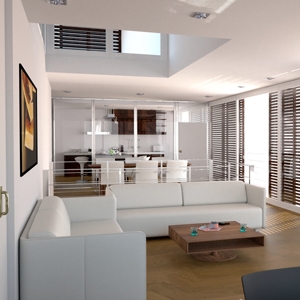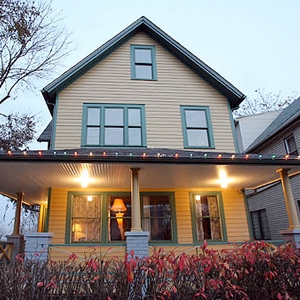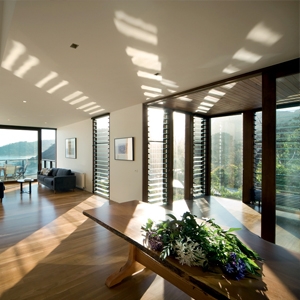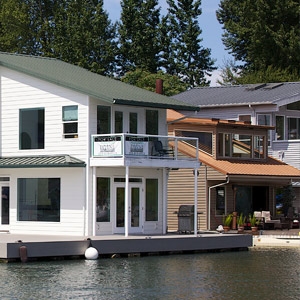7 Staging Mistakes Sellers Make
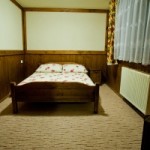 Staging has become an important part of the selling process and of good marketing plans. I have changed my perspective on staging. As a practical person who sees possibility in most things, I didn’t set a lot of store in staging until recently. My opinion was that the house needed to be priced correctly for the market. But, I am beginning to see the merits of staging, especially for property that has special challenges such as awkward walk-through paths or sloping ceilings or no apparent location for television. But, staging has its own pitfalls and here are some of them that are suggested by blogger Jovan Hackley.
Staging has become an important part of the selling process and of good marketing plans. I have changed my perspective on staging. As a practical person who sees possibility in most things, I didn’t set a lot of store in staging until recently. My opinion was that the house needed to be priced correctly for the market. But, I am beginning to see the merits of staging, especially for property that has special challenges such as awkward walk-through paths or sloping ceilings or no apparent location for television. But, staging has its own pitfalls and here are some of them that are suggested by blogger Jovan Hackley.
- Don’t block the flow! I know you love that overstuffed chair and ottoman for curling up with a good movie on a winter eve, but open floor plans are really important to many buyers, so be careful that the flow of traffic is not obstructed! Remember, the buyers need to be able to see themselves in your home, and freedom to move around is critical to them!
2. It’s Artfully Off-Kilter
Neutral art is a great way to give a home that “finished” feel. However, if your seller’s hanging eye is off, it can make a home feel like a complete mess. To avoid these art disasters follow these smart hanging tips:
- Don’t Suffocate the Photo—Pictures on the same wall need 2-4 inches of room in between. When hanging pictures or painting near furniture, you need to leave around six inches of space.
- 60 Up—Best practice dictates hanging art at eye level. Leave about 60 inches from the floor to the center of the piece.
- Furnish First—Before you hang, furnish the space. Remember that art should accent—not drive—the design.
3. The Wrong Rug
Rugs are another great staging tool that you can use to change a room’s perspective. When used correctly, a rug can create modular visual organization and help show the home at it’s best. But when used wrong, you’ll end up with a big mess.
- Colossal Canyon—Rugs are great for big open spaces that need organization. To use them right in these room, use the “front on” rule. The rug should be large enough that the front legs of all of the pieces in the seating arrangement—chairs and sofas— are placed on the rug. This helps to unify a space without sacrificing the openness of a room.
- Tiny Territory—To make a room feel larger than it actually is, invest in an area rug small enough to fit in a room with all of the “feet” of the major furniture off the rug. This creates visual space and will help buyers see opportunity for organizing the space.
- Lost Luxury—To add a more luxurious visual experience to a room, add a rug that can “house” the major furniture while leaving 16 inches of clearance on each of the four sides of the room.
When staging is done right, it can make a world of difference when it comes to closing a deal quickly and with a great price. But just because your clients (or you!) have taken the time to stage a home, doesn’t mean that the staging helps to highlight a home. After all, the only thing worse than not staging at all is staging that’s done terribly wrong.
After you or your clients have “staged” the soon-to-be-listed property, take a look around and keep an eye out for these seven clear signs that your work isn’t done—or done right. Seeing some eyesores? Make these last minute changes that will get you to the staging finish line and snag your sellers a great deal in a flash.
1. You’ve Blocked the Flow
The fundamentals of staging start with flow. If you want to really sell, make sure you open the way for buyers to fall in love with the home. That means making sure big furniture and other obstacles don’t block a prospective buyers walk through the home. Remember! For many buyers, open floor plans are a big bonus. Show off how great the flow through the home really is.
Love these tips? Get our free guide on the 6 Staging Pitfalls Sellers Should Avoid to share with your current and prospective clients!
2. It’s Artfully Off-Kilter
Neutral art is a great way to give a home that “finished” feel. However, if your seller’s hanging eye is off, it can make a home feel like a complete mess. To avoid these art disasters follow these smart hanging tips:
- Don’t Suffocate the Photo—Pictures on the same wall need 2-4 inches of room in between. When hanging pictures or painting near furniture, you need to leave around six inches of space.
- 60 Up—Best practice dictates hanging art at eye level. Leave about 60 inches from the floor to the center of the piece.
- Furnish First—Before you hang, furnish the space. Remember that art should accent—not drive—the design.
3. The Wrong Rug
Rugs are another great staging tool that you can use to change a room’s perspective. When used correctly, a rug can create modular visual organization and help show the home at it’s best. But when used wrong, you’ll end up with a big mess.
Here are three areas that need rug-help and how to roll out the carpet right:
- Colossal Canyon—Rugs are great for big open spaces that need organization. To use them right in these room, use the “front on” rule. The rug should be large enough that the front legs of all of the pieces in the seating arrangement—chairs and sofas— are placed on the rug. This helps to unify a space without sacrificing the openness of a room.
- Tiny Territory—To make a room feel larger than it actually is, invest in an area rug small enough to fit in a room with all of the “feet” of the major furniture off the rug. This creates visual space and will help buyers see opportunity for organizing the space.
- Lost Luxury—To add a more luxurious visual experience to a room, add a rug that can “house” the major furniture while leaving 16 inches of clearance on each of the four sides of the room.
4. Out of Focus Areas
Another common problem plagues too many staged rooms is the lack of a focal point—or competing focal points. The huge fireplace across from the 60” TV is a serious mistake. In each room, define a focal point and stage to it. This might make the home a little less livable, but can create a more appealing look for photos and showings.
5. Your Numbers Are Off
Repeating items is a great tactic for tying rooms together, but make sure you count odd when you do. If you’re using candles and other knick-knacks for tables and mantles, repeat them in a series of three or five for the best effect.
6. Matchy-Matching
Too much of anything is a bad idea. That goes for accent pieces, colors, and anything else you and your clients have the urge to repeat in décor. The best-designed and staged homes create a different experience in each room or space, but maintain common threads to ensure that it doesn’t look like one big hot mess. Make sure every room has time to shine by subtly varying colors, layout, and accents.
7. It Looks Like Every Other Home
The final, and one of the most fundamental staging sins, is the “run of the mill syndrome.” Remember! Staging is about standing out. If after you’ve “staged” your listing looks like every other house in the neighborhood, you’re not done yet. Start your staging process by identifying the home’s hottest features. Then, build your staging plan around those features. This will help you to make sure every visit isn’t “just another showing,” but has the wow effect that will move a home off the market

